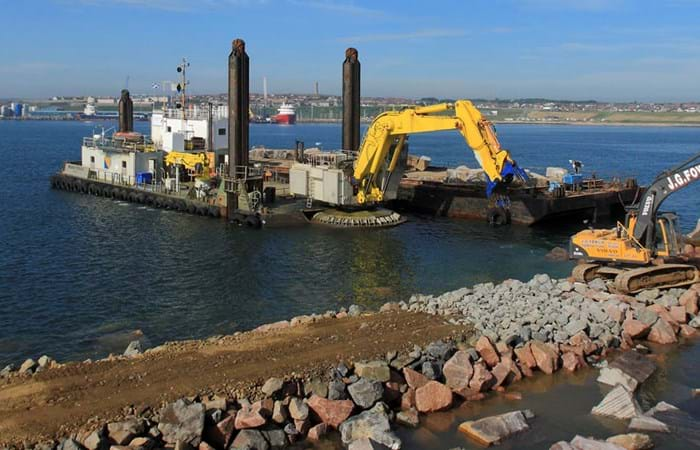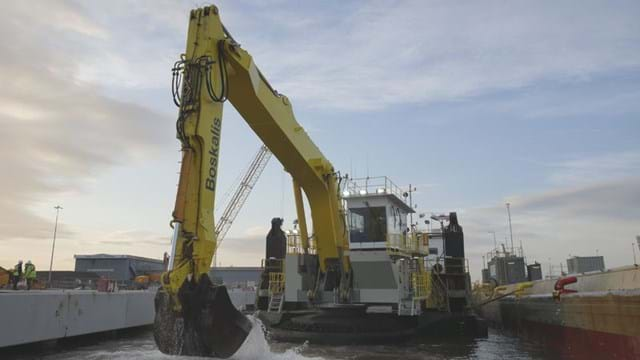The project consisted of capital dredging, reclamation, quay construction and breakwater extension works for Peterhead Smith Embankment Development, in order to develop the area in the north of the harbour at Smith Embankment to provide sheltered berths for vessels ranging from 20 to 160 m in length.
The project was awarded to a Joint Venture between Westminster Dredging and R J McLeod, a well known Scottish Civil Engineering contractor, responsible for the piling and associated civil works involved with the new quay. Westminster Dredging carried out the dredging and reclamation following on from Rockfall, who –together with Terramare – pretreated rock within the dredge area by drilling and blasting. The majority of the dredged material was placed onshore to reclaim an area of Smith Embankment, protected by rock. To protect the new quay, a 100 m long rubble mound extension to the existing Albert Quay breakwater was constructed, for which a total of 130,000 tonnes of rock were used; the remainder armourstone with individual weights of 10 to 16 tonnes. Rock placement was carried out by Manu-Pekka fitted with a special rock grapple. Subsequently, the 120 m long, open piled quay was built along the inside of the extension to the breakwater. The orientation of the breakwater extension has been determined to minimize the reflection of waves on to the oil tanker jetty and the Princess Royal jetty on the south side of the bay. Westminster Dredging have dredged some 100,000 m3 of sand, silt, clay weathered and pretreated rock. This work was carried out by backhoe Manu-Pekka, together with split hoppers Long Sand and Cork Sand. Other associated works included the demolition of the western end of the existing Albert Quay before the new extension was constructed.

